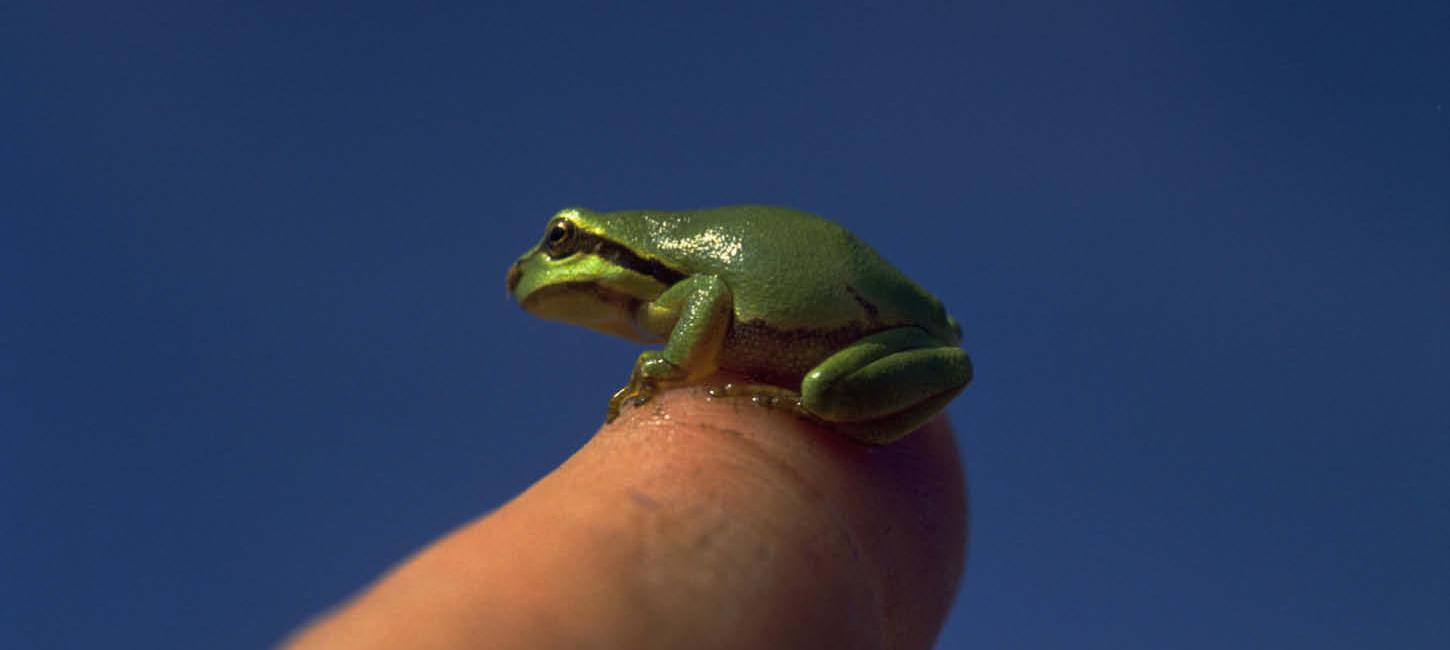
The tree frog and other amphibian
The tree frog and other amphibian is protected in Denmark. 8 species are under strict protection and 6 of these species are found in the Sønderborg-area.
All amphibians are protected
There has been amphibians living on earth for millions of years, and it is reckoned that just 50 years ago the stock of amphibians was 5 times higher then it is today.
Amphibians breed in water
Many ponds have vanished in the wish of more farm land or need of space for housing. In the municipality Sønderborg Kommune, an amazing cooperative with private enthusiasts has helped recreate many ponds. However, recreating ponds is not enough, they also need maintenance so they don´t become choked.
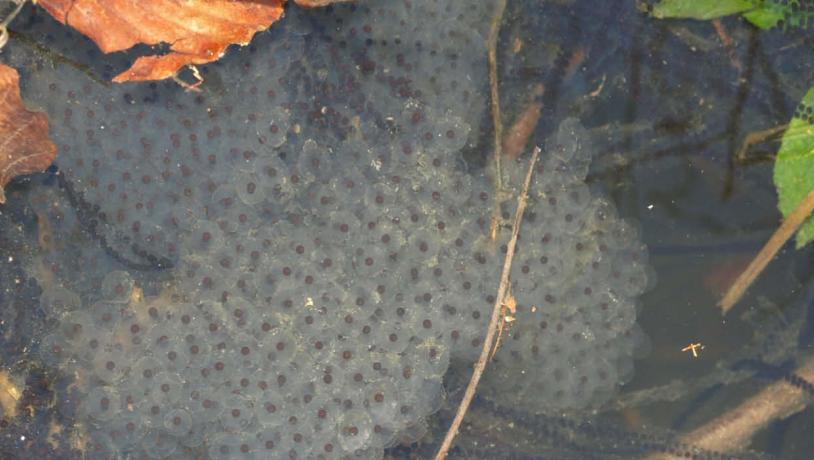
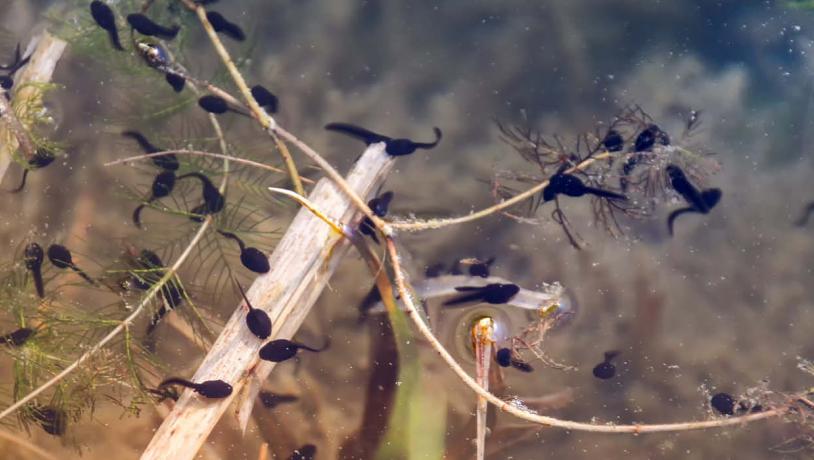
Observe the amphibians and learn more
Frogs lay their eggs in large clusters , while toads lay their eggs in strings. Catching tadpoles and observing their development is extremely facsinating. On island Als it is allowed to collect tadpoles excepted those of the tree frog. It is important that you release the tadpoles or developed frogs back in to the same pond.
Meet the 6 amphibians
14 species of amphibians is found in Denmark, 10 of them is living in the Sønderborg-area and 6 of these are under strict protection.
The amphibians under strict protection is; European tree frog, Common spadefoot, Natterjack toad, Moor frog and Northern crested newt and the latest newcomer: the European fire-bellied toad.
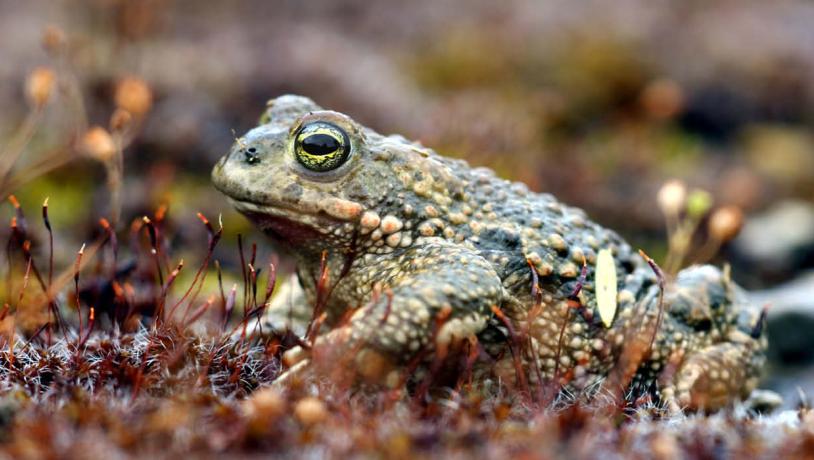
Natterjack toad
The Natterjack toad (Epidalea calamita) is declining and becoming rare in several places in Denmark. Here in the Sønderborg area, you will only find it in the northern part of the island Als and on Broagerland. The Natterjack toad lives by the beach, but you can also find it in sandy beach meadows with low vegetation.
It is listed as "EN" (endangered) on the Danish Red List.
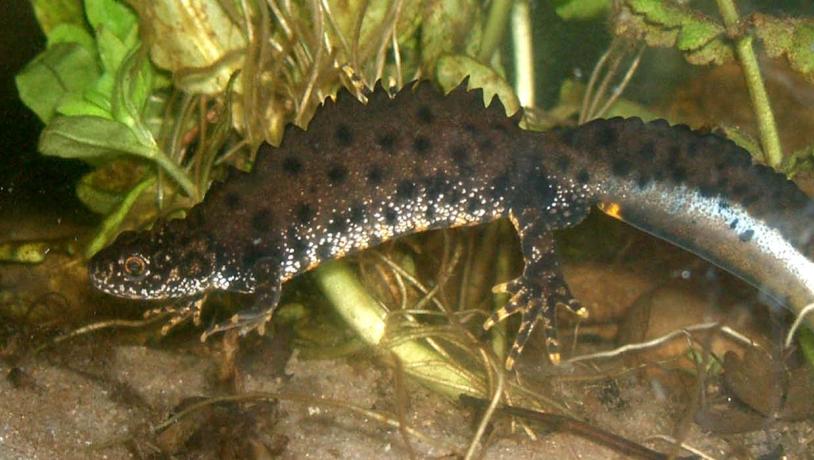
Northern crested newt
The Northern crested newt (Triturus cristatus) is recognizable by its warty skin and the orange-yellow belly with black spots. During the breeding season, the male develops a large, serrated dorsal fin. Northern crested newts deposit their eggs on the underside of aquatic plants. Once the larva has developed into an adult newt, it stays on land and only returns to the water during the breeding season.
It is listed as LC (least concern) on the Danish Red List.

Moor frog
The Moor frog (Rana arvalis) thrives in many different natural habitats relatively close to ponds. The Moor frog can easily be confused with the Common frog, but there are some distinct features, such as the frontal knob on the hind leg of the Moor frog and the light, solid-colored belly of adult frogs, as opposed to the spotted belly of the Common frog.
Something quite special happens to the male during the breeding season when it changes color and turns blue for a few days.
It is listed as NT (near threatened) on the Danish Red List.
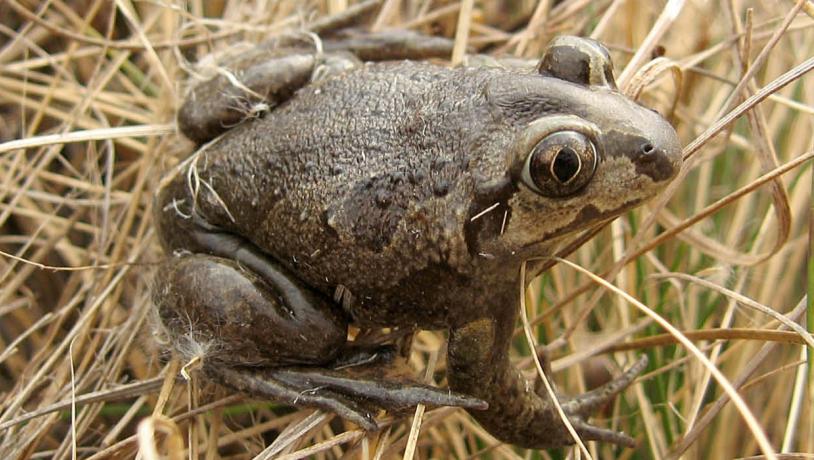
Common spadefoot
The Commen spadefoot (Pelobates fuscus), also known as the Garlic toad, secretes a substance that smells like garlic when it gets scared, and it can even emit loud panic screams. When the Common spadefoot is not breeding, it prefers areas with loose and sandy topsoil. The Sønderborg area is mostly composed of good and fertile clay soil, but you might be lucky to find the Common spadefoot in the northern part of Als and on the mainland near Tørsbøl.
The Common spadefoot is listed as VU (vulnerable) on the Danish Red List and it is believed to be in significant decline.
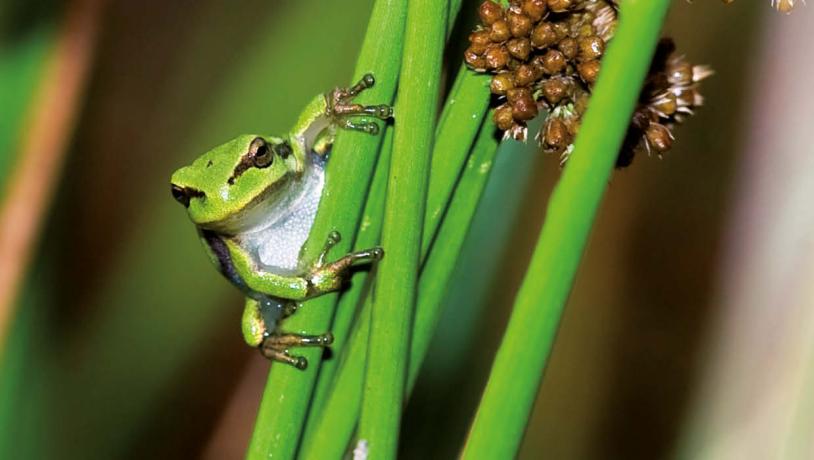
European tree frog
The European tree frog (Hyla arborea) is found in many places on the island of Als, and it is often hard to spot. However, it has a very loud and characteristic croak - sounding a bit like a hoarse duck. The island of Als plays a very central role in the future of the European tree frog. This is precisely where you find one of Denmark's largest concentrations of the little green frog. It is easily recognizable by its bright green color, and remember to look upward when searching for it, as it likes to sit between leafs of green
The European tree frog is listed as NT (near threatened) on the Danish Red List.
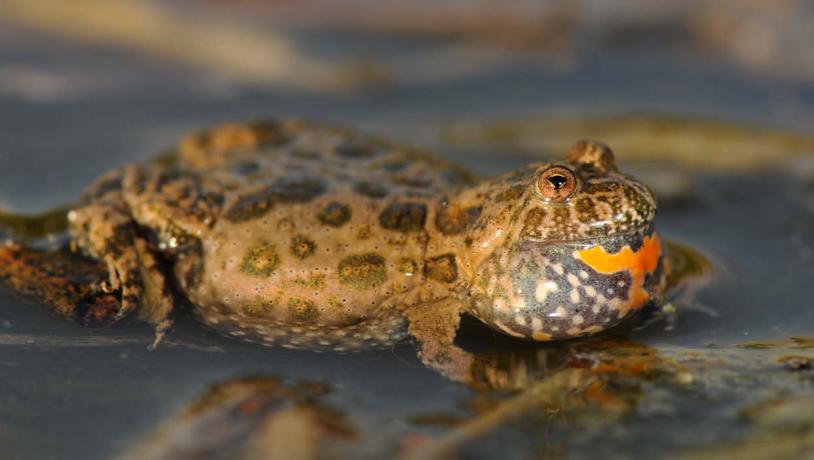
European fire-bellied toad
The European fire-bellied toad (Bombina bombina) was extinct on Als for 80 years, but in 2023, 900 small toads were reintroduced into specially selected waterholes by Sønderborg Municipality and in the summer of 2024 the Danish Nature Agency, Naturstyrelsen, has released another 1800.
This small toad, measuring 5.5 cm, has a warty upper side and most closely resembles a toad. Each toad has a blue-black belly with a unique pattern of orange, red, and yellow spots. The male has a fairly large vocal sac and sounds a bit like blowing into a bottle.
Rinse your fingers thoroughly if you have touched it!
The European fire-bellied toad has a defensive mechanism. When touched, it secretes toxic slime through the skin, and if you then rub your eyes, it can cause a strong burning sensation.
It is listed as NT (near threatened) on the Danish Red List.
Did you know...
That the croaking of the European fire-bellied toad can be heard in a radius of 3 km
That frogs lay their eggs in large clusters, while toads lay their eggs in elegant strings
That European fire-bellied toads can live up to 13 years.
Amphibians are vulnerable
The amphibians need ponds of clean water without fish! Release of fish in pools and ponds is a threat towards the amphibians; fish eat their eggs and larva. Another threat is duck feeding which leads to water pollution. Female European fire-bellied toads avoid ponds with fish and too many ducks when laying their eggs.